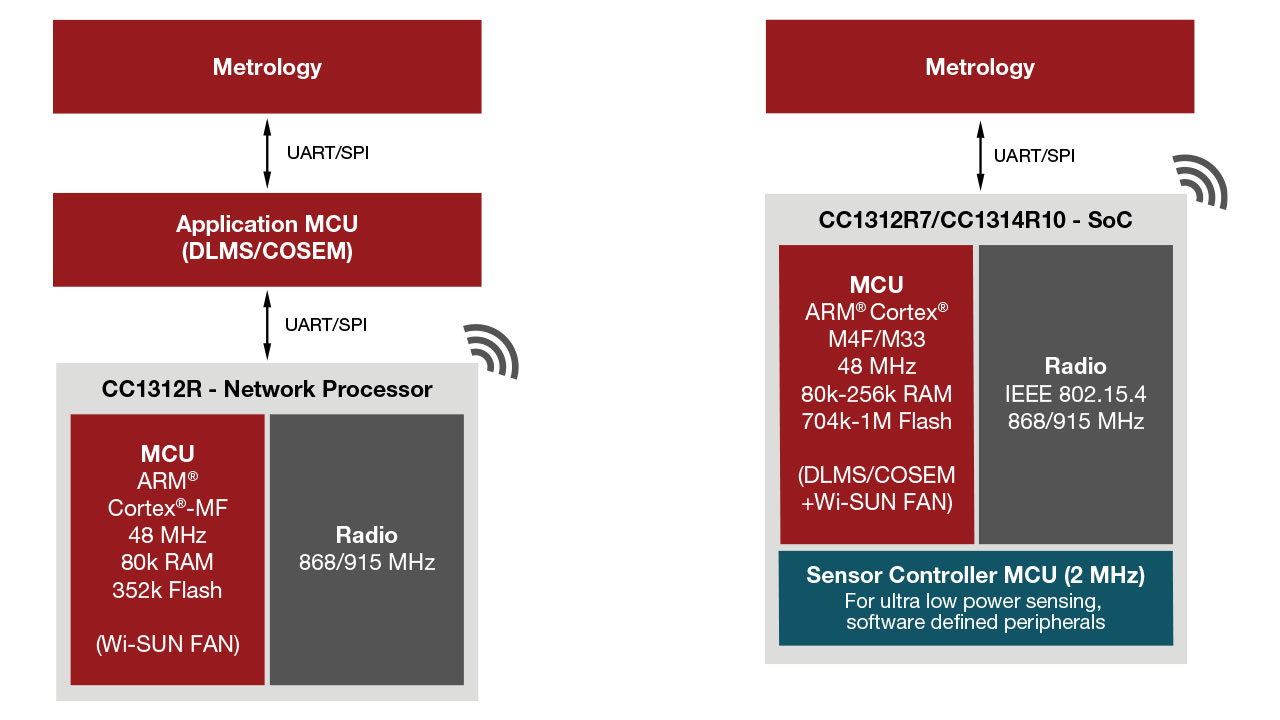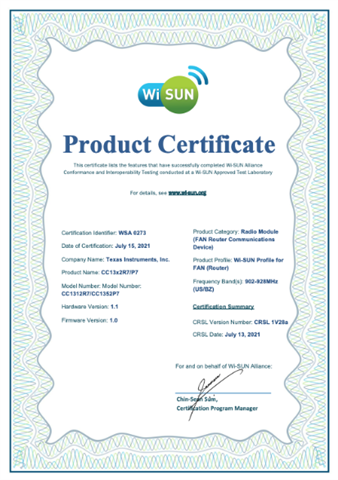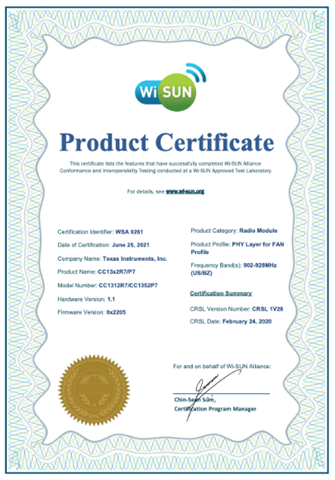SSZT140 august 2021 CC1352P , CC1352P7

Scalability, reliability, security and speed—these are the advantages that the Wireless Smart Ubiquitous Network (Wi-SUNTM) offers to smart cities and the Internet of Things. But as a developer, how can you maximize these advantages in your software design?
Here are four important questions to ask before choosing a Wi-SUN stack.
Question No. 1: Should Your Company Develop a Stack?
It takes several months for a group of well-skilled software engineers to produce a stack from scratch that has an optimized footprint and is ready to be certified by the Wi-SUN Alliance. This time investment pulls engineering resources away from your core business. Instead, look for a company that provides a software development kit (SDK) that includes a Wi-SUN field area network (FAN) 1.0-certified stack and physical layers certified for North America, India, Singapore, Brazil, and the European, Middle East and Africa bands (800 MHz and 900 MHz).
|
Leading Industry Connectivity as a Wi-SUN® Alliance Promoter Member |
|

|
 Learn more about our Wi-SUN-certified products
Learn more about our Wi-SUN-certified products
|
Question No. 2: What’s the Most Cost-effective Choice for Your Application?
There are two aspects to consider here: memory size and SDK cost. Don’t settle for too little memory or pay for more than what your application needs. Choose from a supplier that has a family of devices that offers a range of memory sizes as well as offers devices that can support only Sub-1 GHz bands or multiprotocol as well. If you need an extended range, look for devices with an integrated power amplifier, which will enable you to pick the most cost-effective solution for your specific product needs. As for the SDK cost, the right price is free.
Question No. 3: How Much Flexibility Do You Need?
Select the right architecture for your network processor or single-chip solution depending on the size of the application that you will add on top of the stack, as shown in Figure 1. For e-meters, you could use the CC1352P as a network processor handling all communication subsystems and have the application processor running DLMS/COSEM software and metrology. Alternatively, you can combine the Wi-SUN stack and application into a single device such as the CC1352P7 with its larger memory, and leave the metrology for a dedicated microcontroller (MCU).
 Figure 1 Architecture Options for a Smart-Meter Router Node
Figure 1 Architecture Options for a Smart-Meter Router NodeQuestion No. 4: What Design Tools Are Available?
Great silicon and software need a great set of development tools. Here are some options from TI.
SysConfig can help you develop a Wi-SUN solution for a region that is using bands other than the 800- and 900-MHz bands because it enables the selection of different radio frequencies. It is a collection of graphical utilities for configuring pins, peripherals, radios, subsystems and other components. SysConfig helps you manage, expose and resolve conflicts visually.
Code Composer Studio™ software is an integrated development environment that supports TI wireless MCUs as well as other MCUs and microprocessors. Code Composer Studio software comprises a suite of tools for developing and debugging embedded applications. The software includes an optimizing C/C++ compiler, source code editor, project build environment, debugger, profiler and many other features.
A single-user interface takes you through each step of the application development flow, with familiar tools and interfaces. Code Composer Studio software combines the advantages of the Eclipse software framework with advanced embedded debugging capabilities from TI.
The SmartRF™ packet sniffer is a PC software application that can display and store radio packets captured by a listening radio-frequency (RF) device and supports various RF protocols. The capture device connects to your PC through USB. The packet sniffer filters and decodes packets and displays them in a convenient way, such as Wireshark for CC1352P devices.
The Wi-Sun FAN Spinel command-line interface exposes the configuration and management application programming interfaces operating on a TI Wi-SUN FAN stack running in network processor mode through a command-line interface. This tool is primarily suitable for manual experimentation with controlling TI Wi-SUN FAN network processor instances, and is not meant for expanding into production-grade driver software for TI Wi-SUN FAN network coprocessor devices.
The Wi-SUN FAN Spinel tool offers:
- A path to automated testing and performing field trials with the TI Wi-SUN FAN network coprocessor running on TI SimpleLink™ devices.
- A simple debugging tool for network coprocessor builds of the TI Wi-SUN FAN stack.
Our Wi-SUN product brief and Wi-SUN SDK where we go in more details about our software architecture and review the low-cost development tools available for you.
The following figure shows the product certificates from the Wi-SUN Alliance.
Wi-SUN Certified™ is a seal of approval for products indicating that they have met industry-agreed standards for conformance and interoperability for one or more of the Wi-SUN Alliance profiles.

|

|
|
WSA0260 – Texas Instruments CC13x2R/P WSA0261 – Texas Instruments CC13x2R7/P7 |
Addressing these four questions will help you save development cost and get to market faster with a more streamlined design cycle for your IoT application.